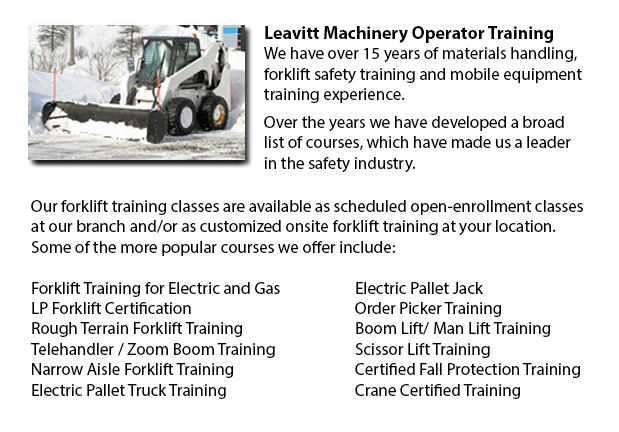
Skid Steer Ticket Oakville - The lift arms on the skid-steer loader are placed beside the driver with pivots at the rear of the driver's shoulders. These features makes the skid-steer loader different compared to the traditional front loader. Because of the operator's nearness to moving booms, early skid loaders were not as safe as conventional front loaders, particularly throughout the operator's entry and exit. Today's' modern skid-steer loaders have many features in order to protect the driver including fully-enclosed cabs. Like various front loaders, the skid-steer model could push materials from one place to another, is capable of loading material into a trailer or a truck and can carry material in its bucket.
Operation
There are various times where the skid-steer loader could be utilized rather than a big excavator on the jobsite for digging holes from the inside. To start, the loader digs a ramp to be used to excavate the material out of the hole. As the excavation deepens, the equipment reshapes the ramp making it steeper and longer. This is a particularly helpful technique for digging underneath a building where there is not adequate overhead clearance for the boom of a large excavator. For example, this is a common scenario when digging a basement beneath an existing house or building.
There is much flexibility in the accessories that the skid steer loaders are capable of. For example, the traditional bucket of many of these loaders could be replaced with various attachments that are powered by the loader's hydraulic system, comprising cement mixers, pallet forks, backhoes, tree spades, sweepers, mowers and snow blades. Some other popular specialized attachments and buckets include wood chipper machines, grapples, tillers, stump grinder rippers, wheel saws, snow blades, trenchers, angle booms and dumping hoppers.
History
In 1957, the very first 3-wheeled, front-end loader was invented in Rothsay, in the state of Minnesota by brothers Louis and Cyril Keller. The brothers invented the loader to be able to help a farmer mechanize the process of cleaning turkey manure from his barn. This machinery was light and compact and had a back caster wheel which enabled it to turn around and maneuver within its own length, enabling it to execute the same work as a traditional front-end loader.
The Melroe brothers of Melroe Manufacturing Company in Gwinner, N.D. purchased in the year 1958, the rights to the Keller loader. The business then hired the Keller brothers to help with development of the loader. The M-200 Melroe was actually the outcome of this particular partnership. This particular model was a self-propelled loader that was launched to the market during the year 1958. The M-200 Melroe featured a a rear caster wheel, a 12.9 HP engine, a 750 lb lift capacity and two independent front drive wheels. By 1960, they replaced the caster wheel together with a back axle and launched the first 4 wheel skid steer loader that was known as the M-400.
The term "Bobcat" is utilized as a generic term for skid-steer loaders. The M-400 soon after became the Melroe Bobcat. The M-440 version has rated operating capacity of 1100 lbs powered by a 15.5 HP engine. The company continued the skid-steer development into the mid nineteen sixties and introduced the M600 loader.
-
Order Picker License Oakville
Order Picker License Oakville - Order preparation operation or order picking as it is more normally known is a method used within warehouse operations and consists of employees called order pickers. The order picker's task is to collect and take arti... More -
Forklift Operator Certification Oakville
Forklift Operator Certification Oakville - Forklift operator certification is normally needed for personnel working within industrial, warehouse or construction setting to guarantee the safe utilization of forklifts. Workplace training need to follow... More -
Scissor Lift Certification Oakville
Scissor Lift Certification Oakville - A lot of worksites and tradespeople like iron workers, welders and masons utilize scissor lift platforms to help them reach elevated work areas. The utilization of a scissor lift is usually secondary to their tra... More -
Forklift Training Courses Oakville
Forklift Training Courses Oakville - When forklift operator safety training is customized for illiteracy, training time is reduced by 50%. Train the trainer, forklift training certification and lift-truck operator driver safety training evaluation pr... More -
Manlift Training Oakville
Manlift Training Oakville - There are numerous manlift training programs which offer a review of the manlift machinery. The practicum portion of the training is one more vital portion of the course. In this section the trainee has chance to demonstra... More -
Boom Lift License Oakville
Boom Lift License Oakville - To operate an aerial boom lift, operators should be licensed through training that can be obtained utilizing both classroom sessions and practical training and by attaining a boom lift license. Instruction should be given... More -
Crane / Overhead Crane / Self-Erect Crane / Truck Mounted Crane / Hydraulic Cranes Training in Oakville
Bridge cranes or likewise called overhead cranes are actually a type of industrial material handling crane using a line and hook mechanism that runs on a horizontal beam running along two widely separated rails. Several overhead cranes could be seen... More -
Telehandler Training in Oakville
Telescopic handlers normally called telehandlers for short, are an extremely popular piece of heavy construction machinery. They are widely utilized in the construction and agricultural trades. These machines have maximum reaching ability and could g... More

Forklift Training Oakville
TOLL FREE: 1-888-254-6157
Oakville, Ontario
forklifttrainingoakville.com
Email Us
About Us


